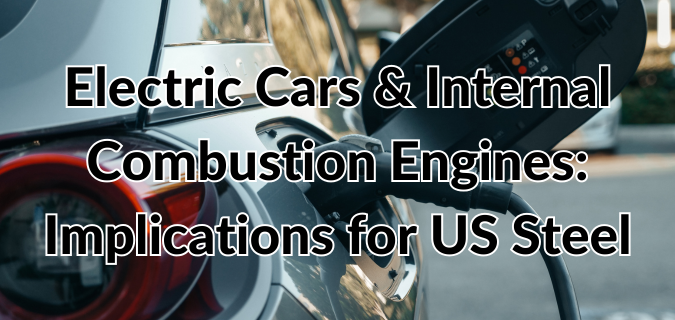
As electric vehicle use continues to grow, the easiest difference for most people to see is the obvious: electric vehicles are powered by batteries rather than internal combustion engines, which reduces the carbon footprint of travelers and manufacturers alike. That’s true, but when we look closer, the quest to reduce carbon emissions is also creating an opportunity to completely reconsider how cars are designed and how they’re built.
The Impact of Electric Vehicles on the Steel Industry
Steel has been the most reliable material in the automotive industry and has been adapting with automotive innovations, largely through new steel grades, to continue to outperform all other materials. For the past several decades, high-strength steel (HSS), advanced high-strength steel (AHSS), and ultra-high strength steel (UHSS) have been the most prevalent and reliable to automakers.
Batteries taking the place of internal combustion engines create the chance to rethink how cars are made. The attraction of lightweight materials (namely aluminum) creeps up again, particularly as current EV batteries actually weigh more than internal combustion engines. Lighter weight means more energy efficiency.
Weight, however, is not the only consideration, and this is why steel will remain the material of choice for automakers. There is no other material that can outperform steel when you consider its collective benefits of safety, cost, and weight reduction.
Strength vs Weight for Electric Vehicle Parts
Any time manufacturers want to consider replacing steel with a lighter-weight material like aluminum or carbon fiber composites, manufacturers have to consider the benefit of the lighter weight against the drawback of other materials not being able to match steel’s intrinsic strength. Plus, remember the AHSS and UHSS we mentioned above? Those grades of steel are much more lightweight than one might think of “traditional” steel, so the difference in weight between other materials and steel isn’t what it once was. That is, steel is a lightweight material—a strong one.
Further, as the steel industry continues to advance, production processes can be simplified and the actual number of parts in an electric vehicle can be reduced as sub-parts are consolidated, not only reducing the overall weight of the vehicle, but also reducing manufacturing time, which increases efficiency and lowers a manufacturer’s carbon footprint.
With batteries weighing more than engine blocks, having the vehicle’s body strength made up of reliable, high-strength steels is what the EV market wants (and we don’t see that changing).
Electric Vehicles’ Influence on Steel Demand
In short, as EVs become more and more prevalent, we see demand for steel going up. The specific applications may evolve, as they always have, but that in itself is another reason steel will remain the material of choice: its adaptability. New alloys specifically created for the particular needs of EV manufacturers, for example, to increase strength and reduce weight, are already being developed and implemented.
Plus, as the EV market is already focused on sustainability, there is no better material than steel to work toward improving sustainability. Steel is 100% recyclable. Innovation in its manufacturing processes continues to increase efficiency while reducing manufacturers’ carbon footprints. Ever-advancing alloys are helping to achieve the new designs and goals of EV manufacturers while remaining safe and cost-effective.
Connect with Capital Steel for Advice on Steel in Electric Vehicles
As the EV market grows and manufacturing increases, you can rely on the experts at Capital Steel amid auto-industry changes. Contact us today to discuss how we can help you achieve your goals.





